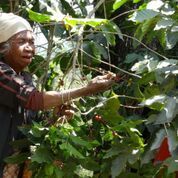Positive outcomes from unfavourable events
Twenty Twenty was certainly a year of looking at things differently and trying to navigate a changing and often uncertain landscape.
I have always felt very fortunate for where I was born and the opportunities that have come with that here in New Zealand.
I feel very fortunate that the decisions that I made (and the support that was available from many avenues, including from loyal customers to the New Zealand Government) have meant that The Snobby Collective (and The Village Snob) have come through the uncertainty strong. My thoughts go out to the other business owners (their staff and families) who had put their heart and soul into something they love, but had to make the heart wrenching decision to close the doors.
This was the case for what was planned to be our first collaboration of 2021. Often these collaborations are a while in the making, as are the tough decisions to shut the door. Unfortunately these two events crossed, but rather than let research go to waste and as a subtle tip of the hat to a fellow passionate coffee business, we felt sharing a segment that was created for our collaboration was the right thing to do. Let us explore a product of circumstance that changed the coffee landscape forever.
The Timor Hybrid:
Unique is one word you could use to describe the Timor hybrid, but it understates just how important this freak of nature actually is to the coffee industry as we know it.
The story is a full circle, history repeating type situation, so lets start at the beginning.
As a result of of coffee trees in the eastern hemisphere dying as a result of Roya (leaf rust), Robusta was introduced to pacific nations in the 19th century.
Sometime in the space between robusta’s introduction and the mid 20th century something very special happened. the result was the only recorded occurrence of spontaneous mating between the Arabica and Robusta coffee species, even more mind boggling is the fact that genetic theory says it shouldn’t be possible, as a result of Arabica having four sets of chromosomes, while Robusta has only two.
Occurring in Timor, it goes by a few names depending upon where in the world it is cultivated, timor hybrid, Hybrido de timor, HDT or Timtim. Referenced to its discovery date back as far as 1917, where it was discovered in a plantation of Typica with wider cultivation taking place on Timor island in the latter 1940’s. The first migration of T / H were in 1957, when samples the discovery were taken by propagation were taken to CIFC (Cenrro de Investigacao das Ferrugens do Cafeeiro) in Portugal. CIFC made selections based on resistance to coffee leaf rust, with these plants then making their way to coffee research and experiment centres around the world.
Since then it has become the parent plant of many well known man made hybrids (cultivars).
Examples include: Colombia (Colombia), Ruiru 11 (Kenya), Catimor & Sarchimor (Brazil) and Costa Rica 95 (Costa Rica).
Further reading:
January 2019: Feature segment, Coffee leaf rust
February 2019: Feature segment: The Country: Timor Leste
Posted: Friday 8 January 2021
Recent Posts
Archive
Tags
|
© Copyright A Bunch of Snobs |

